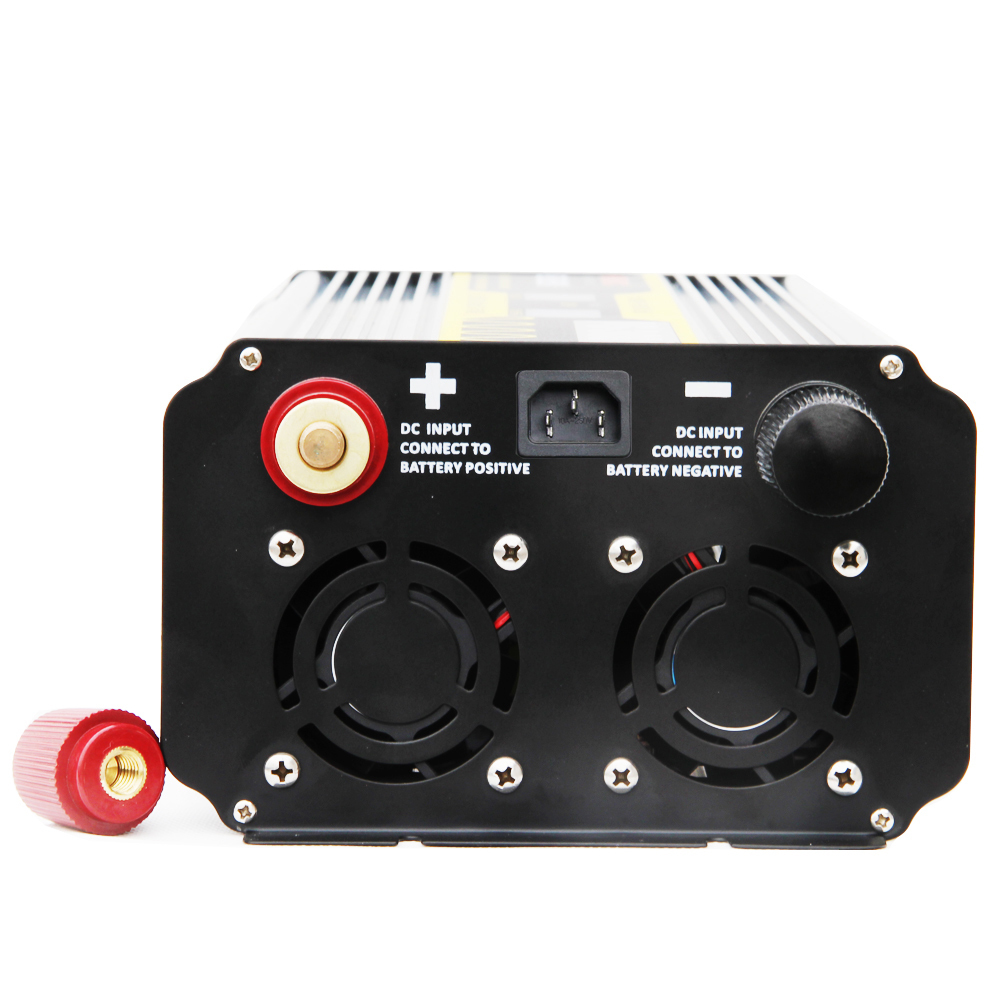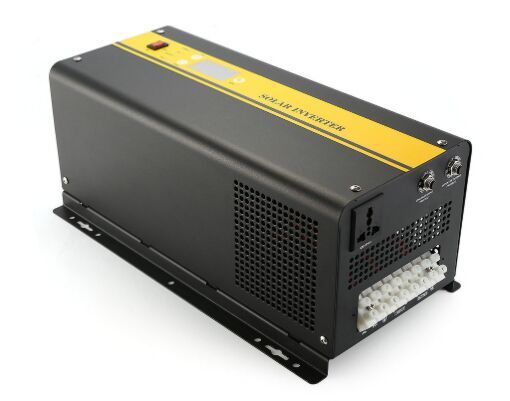An improved high-frequency sine wave inverter, which includes an inverter circuit, a differential mode inductor L1 is connected in series on the input loop, a Y capacitor C5 and a Y capacitor C12 are added between the input terminal and the ground terminal, and the input filter The X capacitor C10 is connected to the capacitor C9 in parallel, the Y capacitor C17 is connected between the cold ground and the hot ground terminal, the X capacitor C8 is connected to the inverter bus voltage filter capacitor C7, and the rectifier diodes DV1, DV2, DV3, DV4 are connected in parallel. Add sets of EMC magnetic rings FB3, FB4, FB7, FB8, respectively, add sets of EMC magnetic rings FB1, FB2, FB5, FB6 on the inverter full bridge switch tubes Q3, Q2, Q5, and Q4, and add RCD absorption circuits respectively, Add a common mode inductor L5 to the AC output terminal, add a Y capacitor C13 and a Y capacitor C14 between the common-mode inductor L5 and the ground terminal, and add an EMC magnetic ring L6 on the output power line.

The conversion rate of a photovoltaic inverter refers to the efficiency at which the inverter converts the electricity generated by the solar panel into electricity. In the photovoltaic power generation system, the inverter plays the role of converting the direct current generated by the solar panel into alternating current and transmitting the alternating current to the power company grid. The inverter has a high conversion efficiency and can be used for home use and sold. increase.
One is that when converting DC current into the AC sine wave, a circuit using power semiconductors must be used to switch the DC current(Pure Sine Wave Inverter For Home: Mobile Power Inverter). At this time, the heat of the power semiconductor will cause loss, but by improving the design of the switching circuit, this loss can be made Reduce to a minimum.

The second is to improve efficiency by relying on the inverter control experience. The output current and voltage of the solar panel will change with sunshine and temperature, and the inverter can optimally control the current and voltage to achieve the maximum amount of power, that is, find the best in the shorter time The PowerPoint, the higher the conversion efficiency.
The control characteristics of the inverter will vary from manufacturer to manufacturer, and its conversion efficiency is also different. For example, although some inverters have high conversion efficiency at maximum power output, their conversion efficiency is very low at low power output; some inverters maintain an average conversion efficiency from low power output to high power output. Therefore, when choosing an inverter, the compatibility with the output characteristics of the solar panel should be considered.